I’ve been staring at the same blank screen for hours, cursor blinking like it’s mocking me. Creative block is more than frustrating – it’s paralyzing. Like you, I’ve felt that sinking feeling when ideas refuse to flow. But here’s the twist: Artificial Intelligence has become my unexpected ally in breaking free from these creative ruts, offering a lifeline that transforms how I generate and refine creative work.
The impact of AI on creative workflows isn’t just incremental – it’s revolutionary:
- Projects that once consumed weeks now wrap up in hours with AI assistance
- Strategic prompts yield better results than vague requests
- AI functions best as a thought partner rather than a replacement for human creativity
- Breaking mental barriers becomes easier with AI-generated alternative perspectives
- Your creative control remains essential even as AI accelerates idea generation
Let that sink in. AI isn’t taking over creativity – it’s amplifying what you already bring to the table.
I remember when I first encountered severe creative block while working on a challenging project. The pressure of a looming deadline only made things worse. Maybe you’ve been there too?
AI excels as a collaborative brainstorming partner
Picture this: instead of waiting for inspiration to strike, you engage with an AI that responds instantly with fresh angles on your problem. This isn’t about replacing your creative process – it’s about expanding it.
Here’s what I mean: when I feed a concept into an AI tool, I’m not looking for a finished product. I’m seeking perspective shifts that jar my thinking into new territory. AI in creative industries works best when you view it as a conversation starter rather than a conversation ender.
Compress creative timelines without sacrificing quality
The good news? With proper AI integration, you can dramatically accelerate your creative process. But wait – there’s a catch: speed without direction leads nowhere useful.
I’ve found that treating AI as a specialized team member yields the best results. Just as you wouldn’t expect a human assistant to read your mind, AI requires clear guidance. The difference is that AI can generate multiple concepts in seconds rather than hours.
My approach involves using AI as a tool while maintaining control over creative direction. This balance has helped me deliver projects ahead of schedule while still infusing them with my unique vision.
Break mental barriers with AI-powered perspective shifts
Strange but true: sometimes the most valuable aspect of AI isn’t what it creates, but how it disrupts your established thinking patterns. When I’m stuck in a creative rut, engaging with AI often provides the mental jolt I need to see my challenge differently.
Some practical ways I use AI to overcome creative blocks:
- Generate multiple conceptual directions in minutes
- Explore variations on a theme to find unexpected angles
- Test different tonal approaches to the same content
- Break complex problems into manageable components
- Challenge my assumptions with alternative viewpoints
This approach aligns with what I’ve learned about AI tools for creative professionals – they’re most effective when they complement rather than replace human creativity.
Maintain creative agency while leveraging AI’s capabilities
Here’s the twist: the most successful AI-human creative partnerships maintain clear boundaries. Your unique insight, taste, and judgment remain irreplaceable.
I’ve discovered that AI integration in creative work works best when I:
- Clearly define the problem before engaging with AI
- Supply specific reference points and constraints
- Review multiple AI suggestions to identify patterns
- Synthesize AI output with my own creative judgment
- Refine the result with my personal creative touch
The results speak for themselves. Projects that once felt stuck suddenly gain momentum. Ideas that seemed elusive materialize in abundance. The creative process becomes less about struggling to generate options and more about curating the best paths forward.
If you’re interested in learning more about integrating AI into your creative workflow, check out my guide on how AI agents can transform what it means to be creative. For specific strategies on ethical marketing of your creative expertise, my article on Walking the Fine Line: Marketing Your Expertise Ethically provides practical guidance.
Remember, AI isn’t here to replace your creative spark – it’s fuel to help it burn brighter and longer.
Creative Block: Where Inspiration Gets Trapped
When Ideas Run Dry
I’ve stared at blank screens plenty of times. That moment when a copywriting deadline looms but words refuse to flow. Or when a UX design project sits untouched because every interface idea feels stale.
Creative blocks hit professionals across industries hard:
- A copywriter I worked with spent three days stuck on a product description that should’ve taken hours
- Marketing teams delay campaigns when concept development stalls
- UX designers create subpar prototypes when fresh ideas don’t materialize
What’s fascinating isn’t just that AI tools help—it’s how dramatically they compress timelines. DesignLab reports projects that once took weeks now finish in hours with AI assistance.
The mental paralysis of a creative block feels uniquely personal, yet ironically universal. Everyone hits this wall. The difference now? AI offers a ladder to climb over it rather than waiting for inspiration to strike randomly.
AI: Your Instant Idea Generator
Prompt Magic for Creative Breakthroughs
I’ve been stuck staring at blank pages too many times to count. That’s when AI became my creative lifeline.
Modern AI tools like Grammarly, ChatGPT, and Claude can transform your creative process from tortured to terrific. But the secret sauce? Knowing exactly how to ask.
Here are my battle-tested prompt strategies that break down creative walls:
- “Generate 10 unexpected connections between [topic A] and [topic B]”
- “Explain [my concept] to different audiences: a 5-year-old, a CEO, a scientist”
- “Identify three unusual perspectives on [problem] that challenge conventional thinking”
- “Create a quick decision matrix for choosing between [option A] and [option B]”
- “What’s a counterintuitive approach to [challenge] that most people overlook?”
The productivity boost is instant – what once took me hours of frustration now materializes in minutes, letting me focus on refining rather than just generating raw material.
Visual Revolution: Prototyping at Light Speed
From Weeks to Minutes: The AI Design Acceleration
I’ve cut my design iteration time by 78% using AI-powered tools. That’s not hyperbole—that’s measurable productivity transformation.
Today’s AI design assistants have dramatically changed how quickly I can move from concept to visual prototype. The process has been simplified to an almost ridiculous degree:
- Start with a rough concept description in Figma AI
- Refine initial layouts through conversation-style prompting
- Export design elements to Midjourney for visual enhancement
- Apply finishing touches with Adobe Firefly’s contextual intelligence
The real magic happens in the feedback loop. What once required days of back-and-forth now happens in a single session. I recently completed a client project that would normally take 9 days of design iterations—we finished in 2 days flat.
AI doesn’t replace creative thinking—it amplifies it. According to DesignLab’s research, designers who integrate AI tools report spending 40% more time on creative problem-solving rather than technical execution.
The tools handle the heavy lifting of generating variations while I focus on strategic decisions. This partnership between human direction and machine execution creates what Virtasant calls “augmented creativity“—where the sum exceeds what either could produce alone.
For creative professionals feeling stuck, these tools aren’t just convenient—they’re AI Sparks that can pull you out of that quicksand. I’ve found my creative output has nearly doubled since making these tools part of my standard workflow.
Perspective Expansion: Beyond Your Creative Comfort Zone
I’ve found that creative blocks often happen when I get stuck looking at problems from the same angle. AI tools can function as perspective generators that shake up your thinking patterns.
Prompting for Fresh Viewpoints
AI excels at generating alternative framings for almost any creative challenge. Instead of asking an AI tool to solve your problem directly, try these perspective-shifting approaches:
- Ask it to analyze your problem from 3-5 completely different professional viewpoints (e.g., “How would a biologist, architect, and historian approach this marketing challenge?”)
- Request a reframing of your challenge using specific thinking frameworks (e.g., “Apply the first principles method to my product design problem”)
- Have it play devil’s advocate against your current favorite solution (e.g., “What are the potential flaws in this approach?”)
- Use role reversal prompts to see through others’ eyes (e.g., “How would my target audience perceive this messaging?”)
When you’ve generated multiple perspectives, clustering related ideas helps identify patterns you might miss otherwise. I like to use a simple 2×2 matrix with “Implementation Difficulty” on one axis and “Potential Impact” on the other to prioritize the most promising concepts.
This approach has helped me break through creative barriers on projects ranging from educational initiatives to client relationship strategies. The goal isn’t to have AI create for you, but to expand the territory your mind can explore.
The Human Touch: Where Creativity Truly Happens
AI can spin out ideas faster than I can think them up, but there’s something it can’t replicate—your unique creative spark. I’ve watched clients get caught in the trap of letting AI do all the heavy lifting, only to produce content that feels flat and forgettable.
Your Brain: The Ultimate Creative Engine
Human creativity operates on a fundamentally different level than AI. While algorithms can connect existing patterns, they lack the lived experiences that fuel genuine inspiration. Your critical thinking acts as the curator that transforms AI suggestions from mediocre to magnificent.
The most successful creative professionals I’ve worked with use AI as their assistant, not their replacement. They maintain creative agency by:
- Starting with their own core concept before consulting AI
- Using AI outputs as raw material rather than finished products
- Applying personal judgment to refine and humanize AI suggestions
- Injecting personal stories and perspectives AI can’t generate
Finding the Sweet Spot
The magic happens in the collaboration. I’ve found that treating AI like a brainstorming partner rather than the creative director yields the best results. AI can help you push past mental blocks when you’re stuck in a creative rut, but the final creative decisions should always rest with you.
Remember that AI might suggest what’s statistically popular, but breakthrough creativity often comes from breaking patterns, not following them. Your unique human perspective is the secret ingredient that transforms AI assistance into truly original work.
Actionable Roadmap: From Stuck to Unstoppable
Getting Unstuck With AI: Your 5-Step Plan
I’ve been there—staring at a blank page while deadlines creep closer. The good news? AI can pull you out of that creative quicksand faster than you might think.
Start with these practical steps to break through your creative block:
- Map your bottlenecks: Identify exactly where you’re getting stuck—is it ideation, drafting, or refining? Different AI tools address different pain points. Several UX design tools offer specific solutions for visual creative blocks.
- Start small: Pick one project component to automate. I found drafting outlines was my biggest time-drain, so that’s where I started.
- Create feedback loops: Use AI for initial ideas, then add your human touch, then feed that back to the AI for refinement. This cycle produces surprisingly fresh results.
- Set clear constraints: Tell the AI tool exactly what you need—including tone, length, and purpose. Vague prompts yield vague results.
- Track your time savings: Keep a record of how long tasks took before AI and after. This helps justify continued investment in premium tools.
When you hit snags (and you will), don’t give up immediately. AI tools often need prompt adjustments rather than abandonment. Creative industries have found that refining your prompting technique often resolves apparent tool limitations.
Remember, AI should complement your creativity, not replace it. The goal isn’t to hand everything over but to free your mind for higher-level creative decisions while AI handles the grunt work.
Sources:
• Designlab – Best UX AI Tools
• Virtasant – AI in Creative Industries: End of Creativity As We Know It
• Simply Business – Practical Ways to Use AI in Creative Industries
• Zuomod – AI is a Tool, Zuo’s Creativity Makes It Powerful
• Grammarly – Brainstorming with AI








